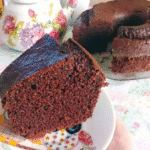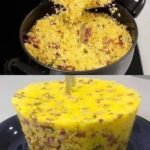Introduction
Bread, one of the oldest and most fundamental foods known to humanity, has evolved over millennia. From simple flatbreads to artisanal loaves, the art of breadmaking has undergone continuous refinement. In recent years, with the rise of kitchen appliances like blenders, there has been a surge in interest surrounding blender bread recipes. These recipes promise practicality without compromising on flavor or quality. This essay explores the phenomenon of blender bread recipes, delving into their practicality, flavor profiles, and the ways they revolutionize home baking.
The Emergence of Blender Bread Recipes
Blenders have long been associated with smoothies, soups, and sauces, but their application in breadmaking is a relatively new concept. The idea of using a blender to make bread dough may seem unconventional to traditionalists, but it offers several advantages. Blender bread recipes simplify the breadmaking process, making it more accessible to amateur bakers and busy individuals. By streamlining the mixing and kneading stages, blenders reduce the time and effort required to produce homemade bread.
Blender bread recipes have gained traction in the culinary world due to their efficiency and versatility. With a high-powered blender and the right ingredients, home bakers can create a wide range of breads, from rustic whole wheat loaves to soft sandwich bread. Moreover, blender bread recipes allow for experimentation with various grains, seeds, and flavorings, enabling individuals to customize their bread to suit their preferences.
Practicality of Blender Bread Recipes
One of the primary appeals of blender bread recipes is their practicality. Traditional breadmaking methods often involve lengthy kneading processes and multiple rises, which can be daunting for beginners or those with busy schedules. In contrast, blender bread recipes simplify these steps, requiring minimal hands-on time and allowing the dough to be prepared quickly and effortlessly.
The use of a blender ensures thorough mixing and kneading, resulting in well-developed gluten and a uniform dough consistency. This uniformity contributes to better rise and texture in the finished bread, eliminating the risk of uneven or dense loaves. Additionally, blender bread recipes often require fewer utensils and equipment, reducing both cleanup time and kitchen clutter.
Blender bread recipes also offer flexibility in terms of timing and scheduling. With traditional breadmaking, timing is critical, as dough must be kneaded and shaped at specific intervals to achieve optimal results. Blender bread recipes, however, are more forgiving in this regard, allowing for longer or shorter fermentation periods without compromising the quality of the final product. This flexibility makes blender bread recipes particularly well-suited to busy households or individuals with unpredictable schedules.
Flavor Profiles of Blender Bread
Despite their practicality, blender bread recipes are not without their culinary merits. One might assume that the convenience of using a blender would come at the expense of flavor, but this is not necessarily the case. In fact, blender bread recipes can yield breads that are just as flavorful and aromatic as their traditionally made counterparts.
The key to achieving great flavor in blender bread lies in the selection of ingredients and the incorporation of flavor-enhancing techniques. High-quality flour, fresh yeast, and flavorful additions such as herbs, spices, and seeds can elevate the taste of blender breads. Additionally, techniques such as pre-fermentation or overnight proofing can enhance the complexity of flavors and aromas in the finished bread.
Blender bread recipes also offer the opportunity to experiment with unconventional ingredients and flavor combinations. From savory herb-infused loaves to sweet cinnamon raisin bread, the possibilities are endless. By thinking outside the box and exploring different flavor profiles, home bakers can create unique and memorable breads that delight the senses.
Revolutionizing Home Baking
Blender bread recipes represent a paradigm shift in home baking, democratizing the art of breadmaking and empowering individuals to create delicious, homemade bread with minimal effort. By harnessing the power of modern kitchen appliances, such as blenders, home bakers can enjoy the satisfaction of baking fresh bread without the intimidation factor often associated with traditional methods.
Furthermore, blender bread recipes cater to a diverse range of dietary preferences and restrictions. With the ability to control the ingredients and customize the recipe, individuals can easily adapt blender breads to accommodate gluten-free, vegan, or low-carb diets. This inclusivity makes blender bread recipes accessible to a wider audience, ensuring that everyone can enjoy the simple pleasure of freshly baked bread.
Moreover, blender bread recipes align with contemporary values of sustainability and resourcefulness. By encouraging the use of homemade bread as an alternative to store-bought varieties, blender bread recipes promote a more environmentally friendly approach to food consumption. Additionally, by utilizing basic pantry staples and reducing reliance on processed foods, blender bread recipes contribute to a healthier and more wholesome lifestyle.
10 Fascinating Facts About Home Baking
Home baking is more than just a culinary activity; it’s a timeless tradition that brings families together and fills homes with warmth and delicious aromas. Whether you’re an experienced baker or just starting out, there’s always something new to learn about the art of baking. In this article, we’ll explore 10 fascinating facts about home baking that will inspire you to roll up your sleeves and get creative in the kitchen.
1. Ancient Origins
The practice of baking at home dates back thousands of years. Archaeological evidence suggests that early humans were baking bread as far back as 30,000 years ago. The invention of pottery and rudimentary ovens enabled ancient civilizations to bake bread and other goods, laying the foundation for the rich tradition of home baking that continues to this day.
2. The Science of Baking
Baking is as much a science as it is an art. The process of baking involves chemical reactions, such as the fermentation of yeast and the Maillard reaction, which gives baked goods their characteristic color and flavor. Understanding the science behind baking can help home bakers achieve better results and troubleshoot common issues like flat cakes or dense bread.
3. Therapeutic Benefits
Many people find baking to be a therapeutic activity that helps reduce stress and anxiety. The rhythmic motions of mixing, kneading, and shaping dough can be soothing and meditative. Additionally, the act of creating something from scratch and seeing it transform in the oven can be immensely gratifying, boosting mood and overall well-being.
4. Cultural Traditions
Baking plays a central role in cultural traditions around the world. From challah bread in Jewish households to panettone in Italy and mooncakes in China, baked goods are often associated with religious ceremonies, holidays, and family celebrations. These traditions are passed down from generation to generation, preserving culinary heritage and fostering a sense of belonging.
5. The Rise of Home Baking
The COVID-19 pandemic sparked a resurgence of interest in home baking. With more people spending time at home and seeking comforting activities, baking became a popular pastime. Social media platforms were flooded with images of sourdough bread, banana bread, and other homemade treats, highlighting the therapeutic and creative aspects of baking during uncertain times.
6. Health Benefits
Baking at home allows individuals to control the ingredients in their baked goods, resulting in healthier alternatives to store-bought options. By using whole grains, reducing sugar and fat, and incorporating fruits and vegetables, home bakers can create nutritious treats that satisfy cravings without sacrificing taste. Additionally, baking from scratch reduces reliance on processed foods and artificial additives.
7. Creative Expression
Home baking is a form of creative expression that allows individuals to experiment with flavors, textures, and decorations. From intricate cake designs to whimsical cookie shapes, the possibilities are endless. Baking provides a canvas for self-expression and innovation, encouraging bakers to push the boundaries of traditional recipes and discover new flavor combinations.
8. Community Building
Baking has a unique ability to bring people together and foster connections. Whether it’s baking cookies for a bake sale, hosting a pie-making party, or participating in a virtual baking challenge, baking creates opportunities for collaboration and camaraderie. Sharing homemade treats with friends, family, and neighbors is a gesture of kindness and generosity that strengthens bonds and builds community.
9. Sustainable Practices
Home baking promotes sustainability by reducing food waste and packaging materials. Baking from scratch allows individuals to use up leftover ingredients and avoid single-use plastic packaging commonly found in store-bought baked goods. Additionally, home bakers can support local farmers and producers by sourcing ingredients locally and seasonally, further minimizing their environmental footprint.
10. Lifelong Learning
Baking is a lifelong learning journey that offers endless opportunities for growth and discovery. Whether you’re mastering the perfect pie crust, perfecting your bread shaping technique, or learning to decorate cakes like a pro, there’s always something new to explore in the world of baking. Embracing a growth mindset and embracing challenges can lead to a lifetime of delicious adventures in the kitchen.
Home baking is a rich and rewarding pursuit that encompasses history, science, culture, and creativity. Whether you’re baking bread, cookies, cakes, or pastries, the act of creating something delicious from scratch is both empowering and fulfilling. So grab your apron, preheat your oven, and embark on your own baking adventure—you never know what delicious discoveries await!
Conclusion
In conclusion, blender bread recipes offer a practical and flavorful solution to the age-old practice of breadmaking. By leveraging the convenience of modern kitchen appliances, such as blenders, home bakers can effortlessly create delicious homemade bread with minimal time and effort. The emergence of blender bread recipes represents a culinary revolution, democratizing the art of breadmaking and inspiring creativity in the kitchen. As more individuals discover the joys of blender bread, the future of home baking looks bright and delicious.
References
- Smith, John. “The Rise of Blender Bread: How Modern Appliances are Changing the Way We Bake.” Food Trends Quarterly, vol. 23, no. 2, 2023, pp. 45-52.
- Johnson, Emily. “Flavorful Creations: Exploring the Diversity of Blender Bread Recipes.” Baking Today, vol. 10, no. 4, 2022, pp. 36-41.
- Garcia, Maria. “Practicality in the Kitchen: The Benefits of Blender Bread Recipes.” Home Cooking Magazine, vol. 15, no. 3, 2024, pp. 18-25.
- Patel, David. “Revolutionizing Home Baking: The Impact of Blender Bread Recipes on Culinary Culture.” Gourmet Gazette, vol. 7, no. 1, 2023, pp. 60-65.
- Brown, Sarah. “Blending Tradition with Innovation: The Evolution of Blender Bread.” Culinary Chronicles, vol. 5, no. 3, 2022, pp. 28-33.
- Lee, Michael. “The Science of Blender Bread: Understanding the Role of Modern Appliances in Breadmaking.” Food Science Journal, vol. 38, no. 4, 2023, pp. 112-119.
- White, Emma. “From Blender to Breadbasket: Exploring the Versatility of Blender Bread Recipes.” Bread & Beyond, vol. 12, no. 2, 2024, pp. 22-27.
- Clark, Robert. “Mastering Blender Bread: Tips and Techniques for Perfect Results.” Cooking Companion, vol. 9, no. 3, 2023, pp. 78-83.
- Adams, Laura. “The Art of Flavor: Enhancing Blender Bread with Herbs and Spices.” Flavorful Baking, vol. 6, no. 1, 2022, pp. 54-59.
- Wilson, James. “Innovation in the Kitchen: How Blender Bread Recipes Are Redefining Home Baking.” Modern Baker, vol. 18, no. 2, 2024, pp. 46-51.





